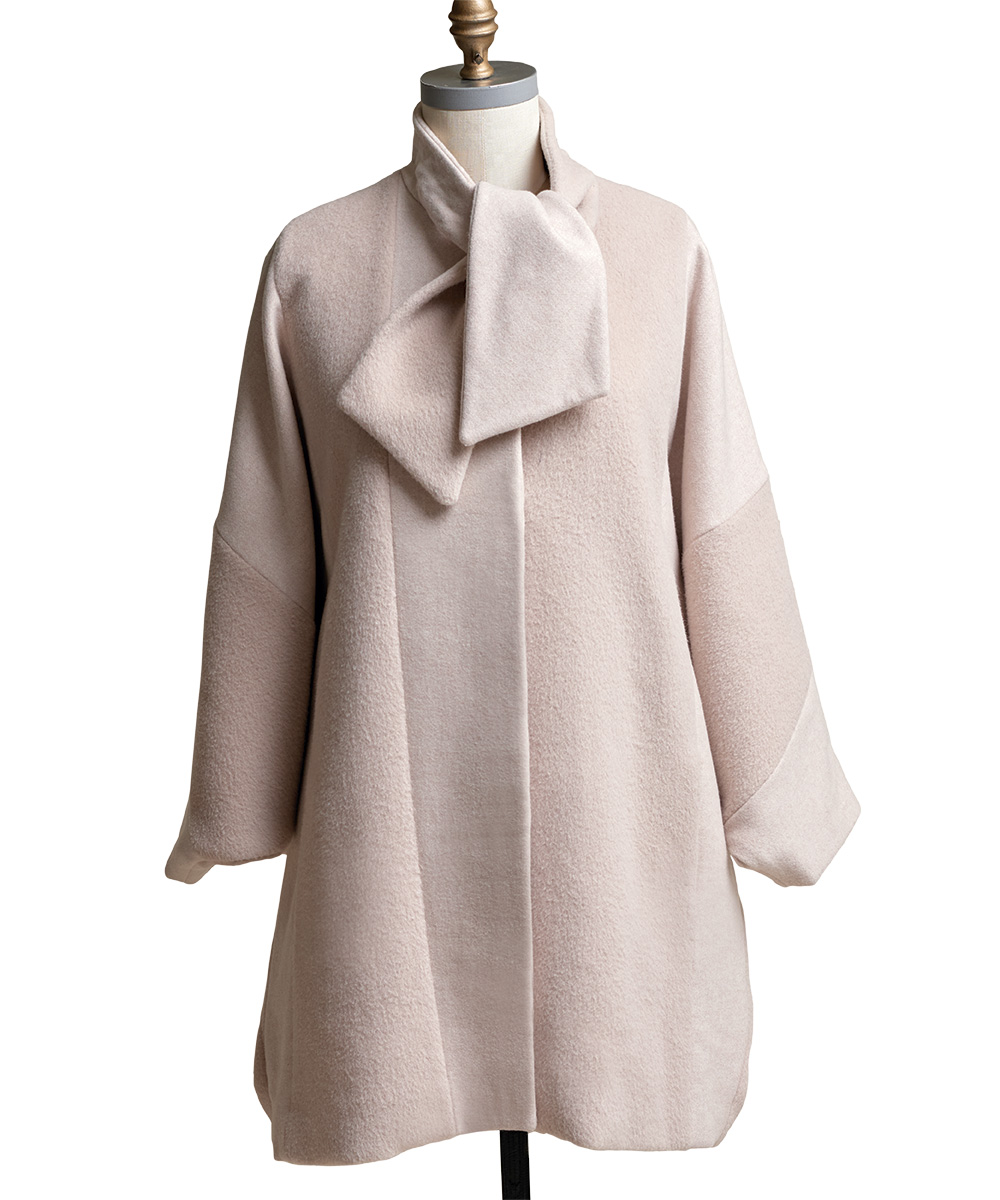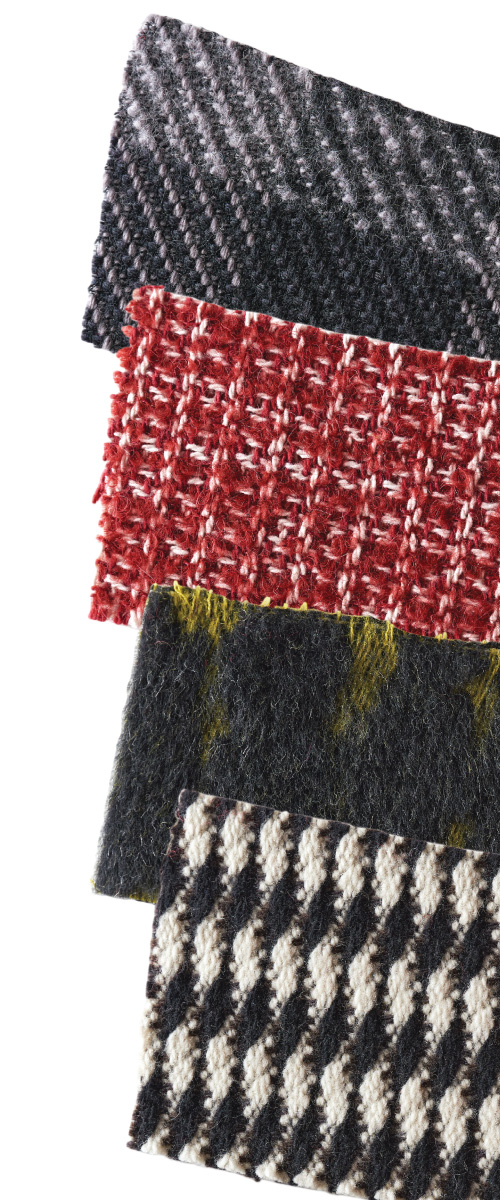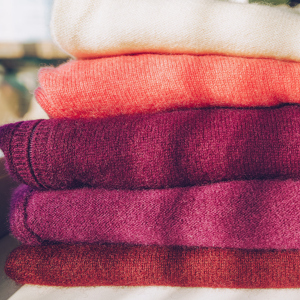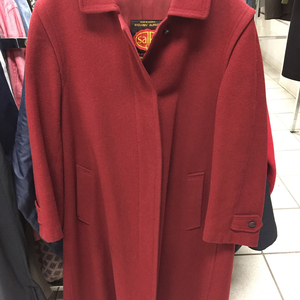Sewing Tools and Methods for Working with Alpaca Fabrics
Luxurious warmth from a lightweight fiber
The alpaca’s fleece is one of the most sought-after fibers in the world, with characteristics similar to cashmere. The fiber is soft, light, and lustrous. Fabrics made with it are warm to wear without being bulky.
According to the Alpaca Owners Association, alpacas generally weigh between 120 and 150 pounds, about half the size of llamas, with which they are often confused. They are related: Alpacas belong to the South American branch of the camelid family, which includes llamas, camels, and vicuna.
Each alpaca is sheared for about 5 to 10 pounds of fleece per year. Alpacas do not produce lanolin, the waxy oil that coats sheep’s wool, and their fleece requires less cleaning and scouring before spinning. High-grade alpaca fleece is also considered to be hypoallergenic, and its softness renders it less irritating to those who find sheep’s wool scratchy.

Woven alpaca makes a beautiful jacket, coat, or an opulent throw. Alpaca knit yardage is rare, but it does exist and makes wonderful sweaters, cardigans, or clingy dresses. Since the knit variety is difficult to find for the home sewer, the techniques shared in this article focus on working with woven alpaca fabrics. Try this naturally soft fiber for a sewing challenge and a toasty warm wearing experience.
Prepare and cut
Since alpaca fabrics are costly and ripped stitches weaken the fabric, always test and fit the pattern first in a less expensive fabric. Follow these important tips for the best results when cutting this precious textile.
Preshrink: Hold the steam iron 1/2 inch above the fabric, or ask the dry cleaner to preshrink the yardage. If prewashing, wash by hand: Pure alpaca can be handwashed and must be dried flat.
Plan a cutting layout: The right side has more nap than the wrong side. Use a with-nap layout, double thickness, and orient pieces so the nap points toward the hem.
Avoid the bolt crease: Open the fold and press it flat to see if the crease is permanent. If it appears to be, cut around it.
Mark effectively: Apply tailor’s tacks or safety pins on this lofty fabric.
Follow this cutting advice: Keep the pattern and fabric in place with pattern weights. Use a rotary cutter or sharp scissors to cut. Round the points of collars and pockets to avoid bumpy corners and achieve a cleaner, smoother edge when sewn.
Secure the cut pieces: Serge-finish the pieces after cutting, or zigzag the edges.

Construct with care
The qualities that make alpaca lovely to wear—its softness and loft—create challenges when stitching. Consider these precautions for a fuss-free experience.
Stabilize the neckline and shoulders: Apply stay tape or 1/4-inch-wide selvage strips. Consider creating the facings in less bulky fabrics such as wool jersey.
Add sew-in interfacing: Don’t apply fusible interfacing to alpaca fabric. If you are making a tailored jacket, underline the entire jacket with cotton batiste or voile. Armo Weft interfacing can be fused to the wrong side of the underlining.
Choose needle and thread: Silk thread is preferred for invisible seams, but good-quality polyester or cotton also can be used. Install an 80/12 universal needle.
Set a stitch length: Apply a 2.5 mm straight stitch.
Hand-baste the seams: This effort minimizes fabric slippage.
Adjust the fabric as you sew: On the sewing machine, lift the material every 6 inches or so and smooth it out.
Keep the texture when pressing: Place the right side on a needle board or terry cloth towel. Set the iron to a wool setting with steam, and use a press-and-lift motion.
Finish artfully
The final touches are important to your alpaca garment’s overall look. Maintain your diligence with the right choices in finishing details and closures.
Avoid topstitching: Instead, hand-pick woven alpaca with rayon thread or buttonhole twist. Make stitches 1/2 inch from the finished edge and 1/2 inch apart.
Choose a buttonhole: Try corded machine-sewn buttonholes, hand-stitched keyhole buttonholes, or bound buttonholes, or place button openings in a seam.
Hem by hand: Fold or serge the hem allowance edge, then hand-hem the garment with a blind hemstitch.
Select a seam finish: No need to bother if the garment is lined; otherwise, pink each seam allowance, or serge them separately with a three-thread overlock stitch.
Sandra Betzina is the author of All New Fabric Savvy (The Taunton Press, 2017), from which this article is adapted
































A consideration in choosing alpaca is that it is almost twice as warm as wool, so it is a good choice where warmth is a consideration. Alpaca yarns are typically blended with wool because alpaca by itself has a tendency to stretch....ask any knitter. So you do want a wool/alpaca blend. Do not confuse alpaca with llama...they are different animals and the fibers are quite different. Good quality alpaca textiles can be obtained from sources in Latin America. The camelid fiber that is indeed very expensive is vicuna, which is even softer than alpaca and quite rare.